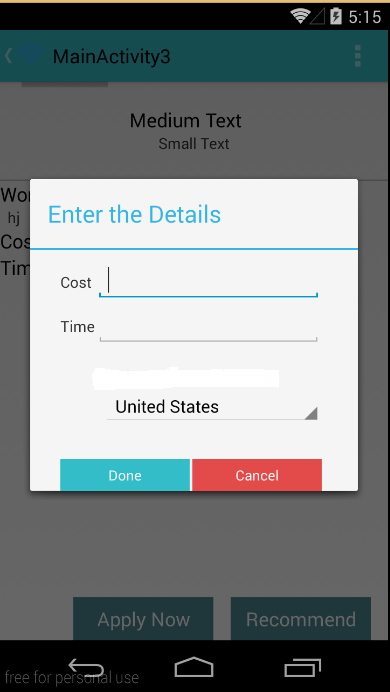Create Custom Dialog in Android

Creating a custom dialog by using the method setContentView(viewtype). To use this function you have to create a reference variable for Dialog class object as i have done below Dialog dialog=new Dialog(Context); LayoutInflater inflater = LayoutInflater)getSystemService(Context.LAYOUT_INFLATER_SERVICE); View v1=inflater.inflate(R.layout.yourlayout, null); //perform operation on elements in Layout dialog.setContentView(v1); dialog.show(); //For getting the elements in the layout you have to use the findViewById on the View v1. //Just like this and perform whatever function you have to perform on click of the button. So isn't it simple. Button button=v1.findViewById(R.id.buttonid); Getting IP address of the android device visit this link





